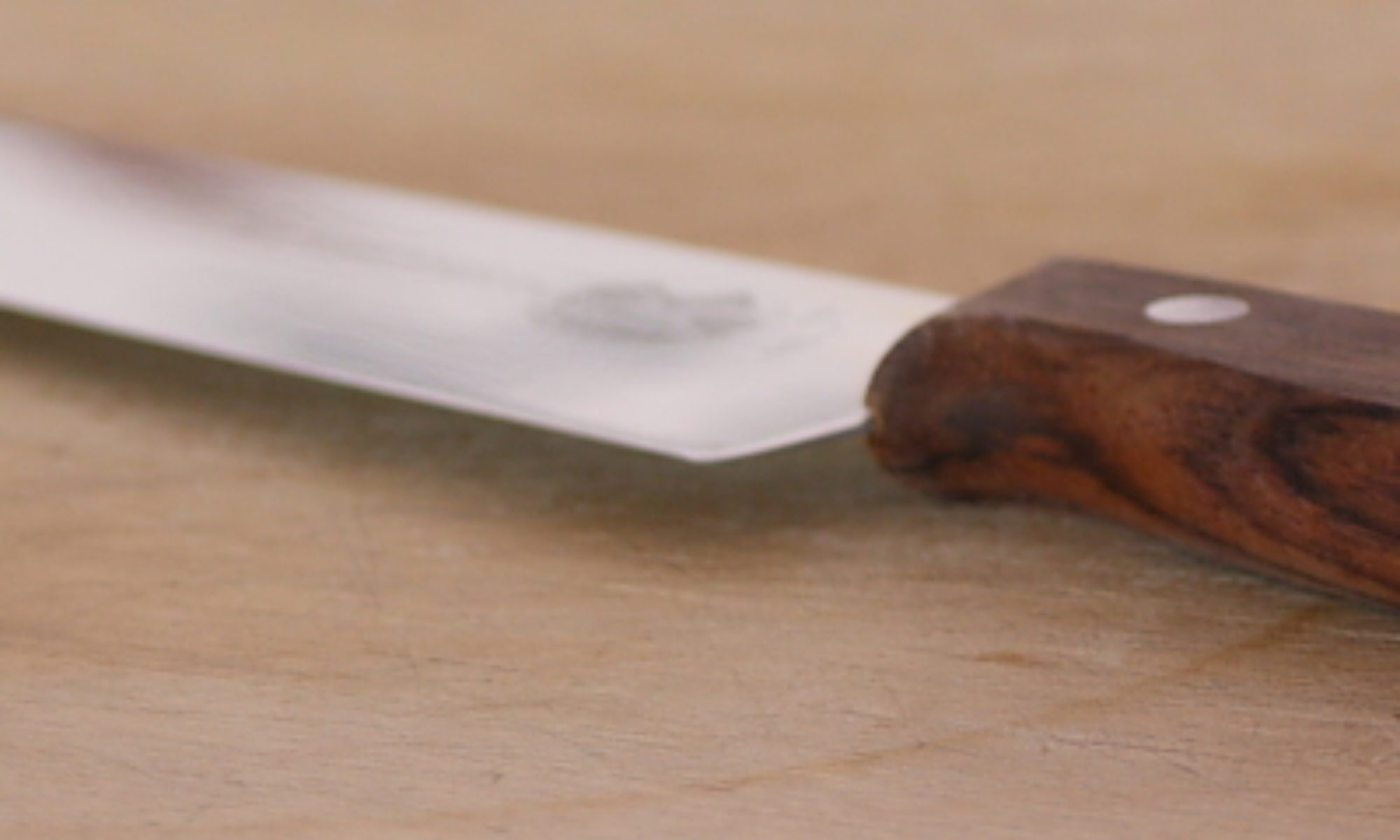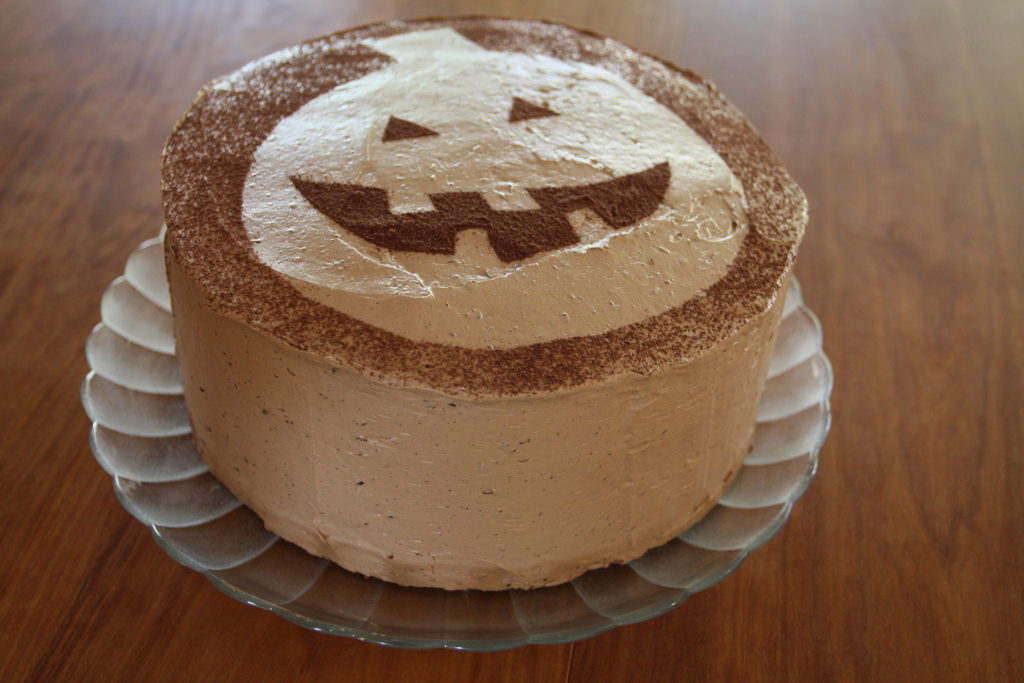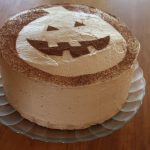
Normally, we make white cakes. Why? We don’t know, but, if we had to guess, it’s because we think they look a little nicer, with that bright white crumb and fine, tender texture. But, that comes at a cost. Since they only use the egg whites, you need to figure out what to do with the extra egg yolks. For us, it’s not too difficult; we can use them in pasta dough, or pudding, or chocolate pots de crème, or ice cream, or, well, that’s enough. But, we know that not everyone wants to whip up a batch of fresh pasta right after baking a cake. Hence, yellow cakes.
The cake we made is a yellow cake with a Swiss meringue bittersweet chocolate buttercream — don’t worry, the post about the buttercream is tomorrow or the next day — but we’re going to cover just the cake today. It’s a pretty straightforward cake, and the recipe (Four-Egg Cake) comes straight from the home cook’s bible: The Joy of Cooking, by Irma S. Raumbauer and Marion Raumbauer Becker, although we fully admit to tweaking it just a bit. Our tweak was simple: use buttermilk instead of milk. It’s a small thing that helps ensure your cake will taste its best.
Delicious Yellow Cake
Ingredients
- 2 2/3 cup cake flour, sifted before measuring (266 g)
- 2 1/4 tsp double-acting baking powder
- 1/2 tsp salt
- 1 cup unsalted butter, room temperature (2 sticks)
- 2 cups sugar (400 g)
- 4 eggs separated, room temperature
- 1 1/2 tsp vanilla extract
- 1 cup buttermilk
- Pinch of cream of tartar optional
Instructions
- Preheat oven to 350°F. Butter three 8- or 9-inch cake pans. Line the bottom of pans with parchment; butter parchment.
- Sift together flour, baking powder, and salt.
- In the bowl of a stand mixer fitted with the paddle attachment, cream butter on medium speed until smooth, about 1 minute. With the mixer still running, slowly add sugar and beat until light and fluffy, about 5 minutes. Periodically scrape down sides of bowl.
- Reduce mixer speed to medium-low and add the egg yolks one at a time, waiting until one is incorporated completely before adding the next.
- Add vanilla extract and beat in. Stop mixer.
- Add flour mixture in three equal additions, alternating with buttermilk. After each addition, pulse the mixture to begin incorporating ingredients, then run on low until just incorporated, about 15 seconds.
- Transfer batter to a large clean bowl, and clean mixer bowl thoroughly.
- Using the whisk attachment on medium, whip egg whites until frothy. Add cream of tartar, if using, and whip on high until stiff, but not dry, peaks form.
- Fold egg whites into batter.
- Divide batter among the prepared cake pans.
- Bake for 30-35 minutes, or until top springs back when press lightly and a skewer inserted into the center comes out clean.
- Let cool on a baking rack about 10 minutes. Run a sharp knife around the edge of each cake and remove from pans to cool completely before frosting.
Ingredient discussion:
Yes, use cake flour. It’s different from all-purpose, having a lower protein content, making for a lighter, more tender cake. Only use unsalted butter, as you probably don’t want a salty-tasting cake. We always try to use eggs that come from free-range hens. The yolks are a brighter yellow, which is the only thing that will give this cake its color, and yellow cakes are supposed to be yellow. Vanilla is 100% pure, natural, vanilla, of course. If you’re making a cake from scratch, why skimp? We always use buttermilk (scratched up in our kitchen, of course) for cakes; it adds a bit of flavor, plus makes them lighter. Oh, and the cream of tartar is there to help the egg whites whip nicely. You can omit it, or use a pinch of salt, or a drop or two of lemon juice. They all do the same thing.
Procedure in detail:
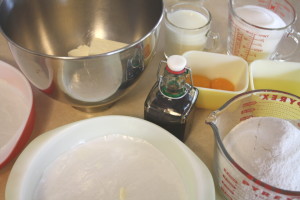
Mise en Place. All the ingredients need to come to room temperature, anyway, so use that time to separate the eggs (easier when cold), sift and measure flour (no need to sift before measuring when using a scale), sift together the flour, baking powder, and salt, and measure the sugar. Butter the cake pans, line the bottoms with parchment, and butter again. There’s nothing worse than having a cake stick and tear when you’re trying to remove it from the pan. In an instant, your tall, three-layer cake, has shrunk by one layer. Let everything warm; probably an hour or two should do it.
Preheat oven to 350°F. Place racks in the upper third and lower third of the oven.
Cream butter. This is really a test to see if the butter has warmed enough. Place the butter in the bowl of your stand mixer, fitted with the paddle attachment, and turn to medium. Let it run for a minute or so. The butter should be smooth and shiny. If it isn’t, let the butter warm longer and try again.
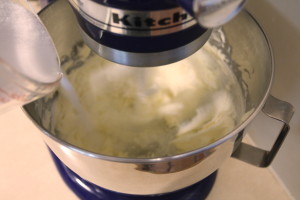
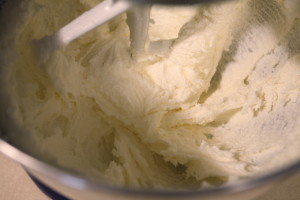
Add sugar. With the mixer still on medium speed, slowly pour in the sugar. We try to pour it in so that the sugar is beaten into the butter as fast as we add it. Once all the sugar is added, continue beating until the butter and sugar mixture is light and fluffy. This may take 5 minutes or longer, depending on the temperature of the butter. This creaming is important, since it’s whipping air into the butter, which means that the cake will be lighter. Periodically, stop the mixer and scrape down the sides of the bowl with a rubber spatula.
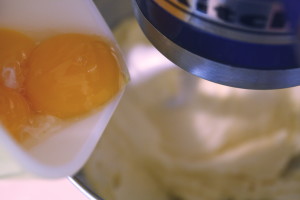
Add egg yolks. Lower the speed of the mixer to medium-low and add the egg yolks one by one, waiting until each is fully incorporated before adding the next. If needed, scrape down the bowl.
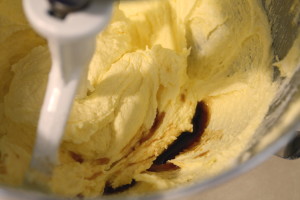
Add vanilla. Add the vanilla and mix on low until incorporated.
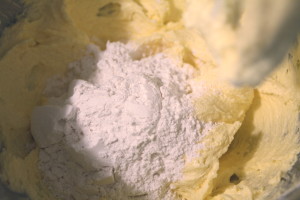
Add flour mixture and buttermilk. This needs to be done in three alternating additions: flour, milk, flour, milk,…. Each addition should be about a third of the ingredient, so add about a third of the flour mixture, pulse the mixer once or twice so the ingredients don’t spew out (or use a spatula to start the mixing), then turn to low and mix until just incorporated, about 15 seconds. Scrape down the bowl if needed. Now, add about a third of the buttermilk and mix in the same way. Repeat twice more with the remaining flour and buttermilk. Scrape the bottom of the bowl to incorporate any flour mixture that’s hiding.
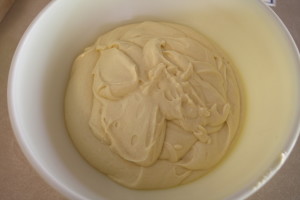
Transfer and clean. Scrape the batter into a large bowl — we use a 4-quart bowl — and clean the mixer bowl very thoroughly. You’ll be whipping egg whites in just a bit, and the bowl must be scrupulously clean. We double-wash it before whipping egg whites; you might think that’s excessive, but we’ve never had egg whites that didn’t whip up light and fluffy, so we’ll continue to double-wash the bowl.
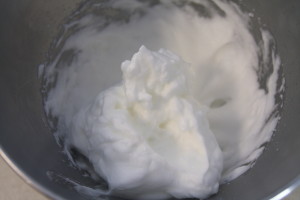
Whip egg whites. Place the egg whites in the now-clean bowl and attach the whisk attachment. Start the mixer on medium and beat until the egg whites are frothy. If you’re using it, now’s the time to add cream of tartar. Increase the speed to high and whip the egg whites until stiff but still glossy.
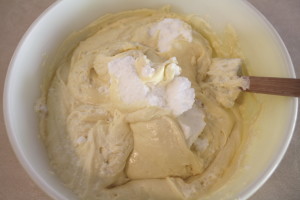
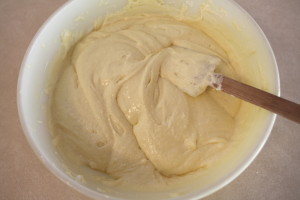
Fold in egg whites. Use a spatula to fold in a third of the egg whites at a time. Each time you add a portion of egg whites, the batter will lighten, making it easier to add the next bit of egg whites without having them collapse. If they do collapse, your cake will be denser than it should be, so work carefully.
Fill pans. Divide the batter among your three prepared cake pans, smoothing out the tops before sliding them into the oven. We only had two cake pans, so we had to bake in stages. It wasn’t that bad; our 8-inch pans needed to be filled a little less than halfway up (about 420g of batter for those who use a scale)
Bake. Bake for 30 to 35 minutes, rotating the cakes halfway through baking, or until the top springs back when pressed lightly, and a skewer inserted into the center of the cake comes out clean.
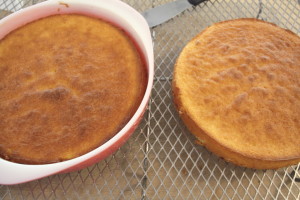
Cool. Place the pans on a rack for 10 to 15 minutes, run a sharp knife around the edge, then release the cake by inverting. Let the cakes cool completely before frosting.
We finished this up as a three-layer cake with a bittersweet chocolate Swiss meringue buttercream frosting and it was wonderful. The cake is light and moist, no chemical taste like some box or mix cakes. And, really, we don’t think that this cake is all that difficult to make. Sure, you do have the separating of the eggs and whipping the egg whites, which, when you first see that as a direction seems daunting; after a few times, though, it becomes almost second nature. And, with so many recipes depending on whipping egg whites, it really is a skill to hone. Oh, the Swiss meringue, we’ll show you that, either tomorrow or the next (we’re making another of these cakes today). Five stars.
